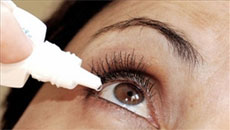Colorectal Cancer: The Statistics
One in four Canadians will die from cancer, making it the most common cause of death in Canada overall. Women have about a 41 per cent lifetime risk and men have a 46 per cent lifetime risk of developing cancer. In other words, women have a 1 in 2.4 and men have a 1 in 2.2 chance of being diagnosed with cancer.
Colorectal cancer (CRC) is the third most common cause of cancer and cancer deaths in Canada. For individuals deemed to be average-risk of CRC, there is about a 7 per cent lifetime chance of CRC. In other words, even if CRC does not run in your family, and you have no bowel problems whatsoever, there is still a 1 in 14 lifetime chance that you will get CRC.
Screening prevents CRC and detects it at earlier, curable stages. This is particularly important given that early-stage CRC may not cause symptoms.
Risk Factors & Risk Modification
Genetic and environmental factors both influence the risk of CRC. Age is the most important risk factor, and CRC becomes increasingly common after age 50. Diseases such as inflammatory bowel disease (Ulcerative Colitis and Crohn’s Disease) heighten the risk of CRC, and patients with a previous colonoscopy showing adenomas (a type of polyp or growth in the colon) have an increased chance of CRC also.
It is important to talk to family members to see if anyone has had CRC or adenomas in the past, and at what age this was diagnosed. Information about first-degree relatives (mom, dad, sisters, brothers and children) and second- degree family members (grandparents, parent’s siblings and their children) should be collected. If possible, find out about all the different types of cancer in the family and not just CRC. Report this information to your family doctor.
Although genetics can’t be changed, there are certain lifestyle factors that can help decrease the risk of CRC. This includes maintaining a healthy weight, exercising regularly and avoiding smoking. Eating plenty of fruits and vegetables and decreasing red meat intake is also thought to be protective. Although there is a lot of information in the media regarding special foods to eat or supplements to take to decrease your risk of cancer, some of this information may not be very reliable or thoroughly proven. Ask your family doctor if you have questions.
Screening: The Fit
Fortunately, due to screening programs, CRC is preventable in many cases. In British Columbia, CRC screening is performed via a special stool test called the fecal immunochemical test (FIT). Everyone aged 50 to 74, who is average-risk for CRC should be screened with a FIT every 2 years. Because cancers and polyps bleed, FIT can detect small amounts of blood in the stool, even if you can’t see blood in your stool or toilet and have no symptoms.
Keep in mind that no screening test is 100 per cent accurate, but regular screening offers the best chance at preventing CRC and detecting it at an earlier stage. The FIT test can be performed in the comfort of your own home and does not require changing your diet or medication regimen. There are detailed instructions available on the BC Cancer Agency’s website at the following address: www.screeningbc.ca/Colon/TheFIT
Patients who are deemed higher than average risk for CRC based on family history are typically referred for colonoscopy directly and not for FIT. It is important that any family history of CRC or adenomas is reported to your family doctor.
Colonoscopy
If the FIT is positive, you will be referred to a specialist called a gastroenterologist (an intestinal doctor) to discuss whether you should have a colonoscopy procedure. In some instances, after referral from your family doctor, you may be scheduled for a colonoscopy right away and you’ll meet your gastroenterologist before the colonoscopy.
Colonoscopy is a procedure where the gastroenterologist gives you sleeping and pain medication so you’re unaware of what is happening around you. While lying on your left side, a flexible rubber tube (about the thickness of a finger) with a camera at the end of it is inserted into your anus and through your colon. This allows careful inspection of the lining or inside of the colon for any abnormalities.
The advantage of colonoscopy is that it can detect very small abnormalities, even a few millimetres in size, whereas CT scans, for instance, are only reliably able to find large abnormalities in the colon. Also, during the colonoscopy, your gastroenterologist can remove abnormal tissue quickly and easily without major discomfort to you. Unlike removing a growth from the skin, for example, polyps in the colon that are removed do not cause pain.
Because of medications given during the procedure, patients are generally unaware of what is happening around them. As the colonoscope makes it way up through the colon, there can be some mild cramping at times, but typically most patients feel slightly bloated because of the clean air that is pumped into the colon during the procedure.
Colonoscopy is a very safe procedure overall and the vast majority of patients experience no major difficulties. However, every procedure has potential risks that patients should be aware of before proceeding. There is about a 5/1000 chance of a serious complication including but not limited to a side effect from the medication given, bleeding, infection, or accidently tearing a hole in the colon (perforation).
Sometimes a growth called a polyp may be found in the colon. This looks like a beige/ pinkish mound of tissue in the colon, and it can be various sizes. Polyps often cause no symptoms, particularly if small. Some are totally benign and have no ability to turn into CRC in the long term, but some of them, over many years, could potentially develop into a CRC if they are not removed – these types of polyps are called adenomas. Luckily, the gastroenterologist can take out most of them completely, and this is one of the most important ways of preventing CRC.
Non-English Speaking Patitents
For patients who don’t speak English fluently, a family member who can translate will be asked to accompany the patient to the colonoscopy, and there is an opportunity to talk with the gastroenterologist and nurses before the procedure. Then, most patients are unaware of what is happening during the procedure because of sleeping medication. Family members can then join the patient as they wake up in the recovery area.
Even if the patient or family member can’t remember what was found at the colonoscopy, results will typically be written down to take home, along with instructions for the rest of the day. A detailed report of what was found during the colonoscopy is also sent to the family doctor.
Interpreters may be difficult to come by, but note that there may be nursing staff available that speak other languages such as Punjabi, who can assist with translation.
References
1.www.screeningbc.ca/Colon/default.htm
2.Canadian Cancer Society’s Advisory Committee on Cancer Statistics. Canadian Cancer Statistics 2013. Toronto, ON: Canadian Cancer Society; 2013.
3.www.cag-acg.org/uploads/guidelines/ Colorectal%20cancer%20screening%20 2004.pdf
DISCLAIMER *The medical advice in this article is intended for residents of British Columbia only. **The general information provided is for informational purposes only and is not professional medical advice, diagnosis, treatment, or care, nor is it intended to be a substitute therefore. Always seek the advice of your physician or other qualified health provider properly licensed to practise medicine or general healthcare in your jurisdiction concerning any questions you may have regarding any information obtained from this article and any medical condition you believe may be relevant to you or to someone else. Never disregard professional medical advice or delay in seeking it because of something you have read in this article. Always consult with your physician or other qualified healthcare provider before embarking on a new treatment, diet, or fitness program. Information obtained in this article is not exhaustive and does not cover all diseases, ailments, physical conditions, or their treatment. The presentation of general information in this article does not establish a physician-patient relationship between you and Dr. Sandhu and is not intended as a solicitation of individuals to become patients or clients of Dr. Sandhu. Unless specifically stated, Dr. Sandhu does not recommend or endorse any specific brand of products, services, procedures, or other information that appears or that may be advertised in this magazine.






